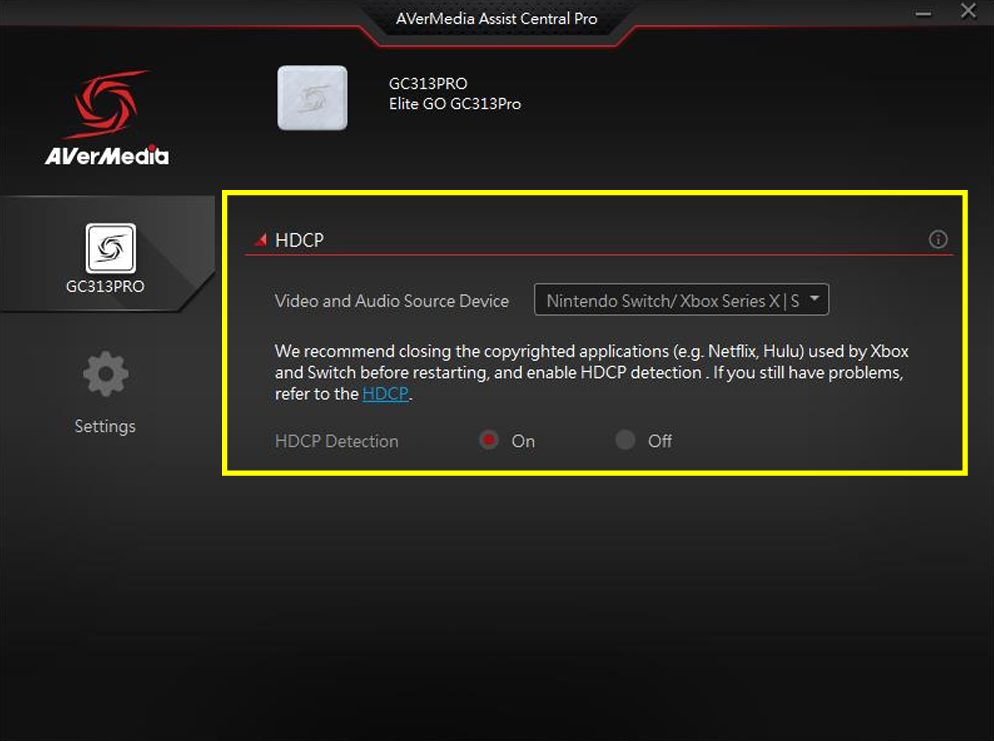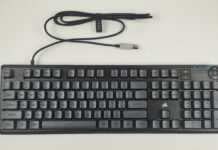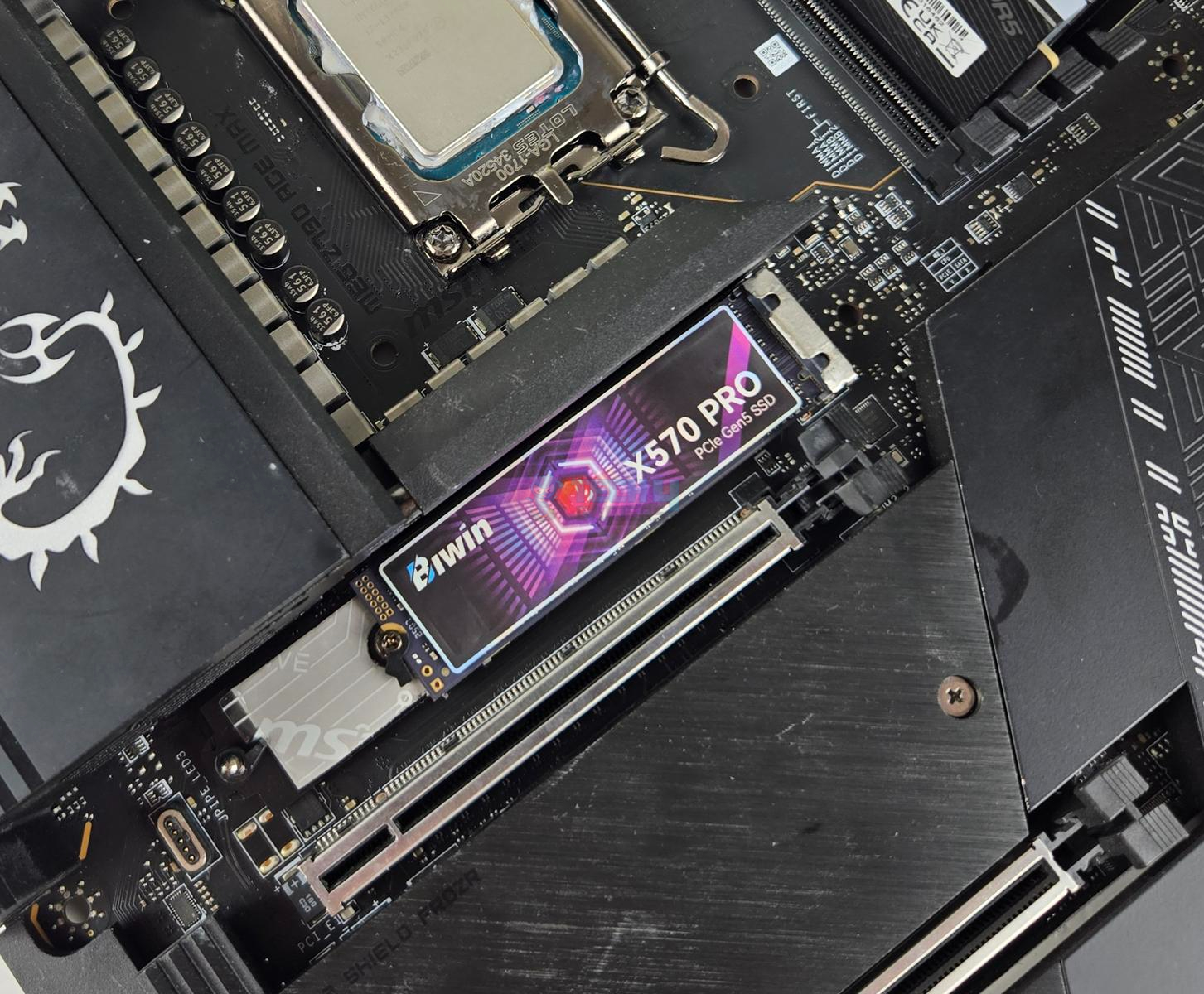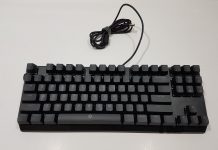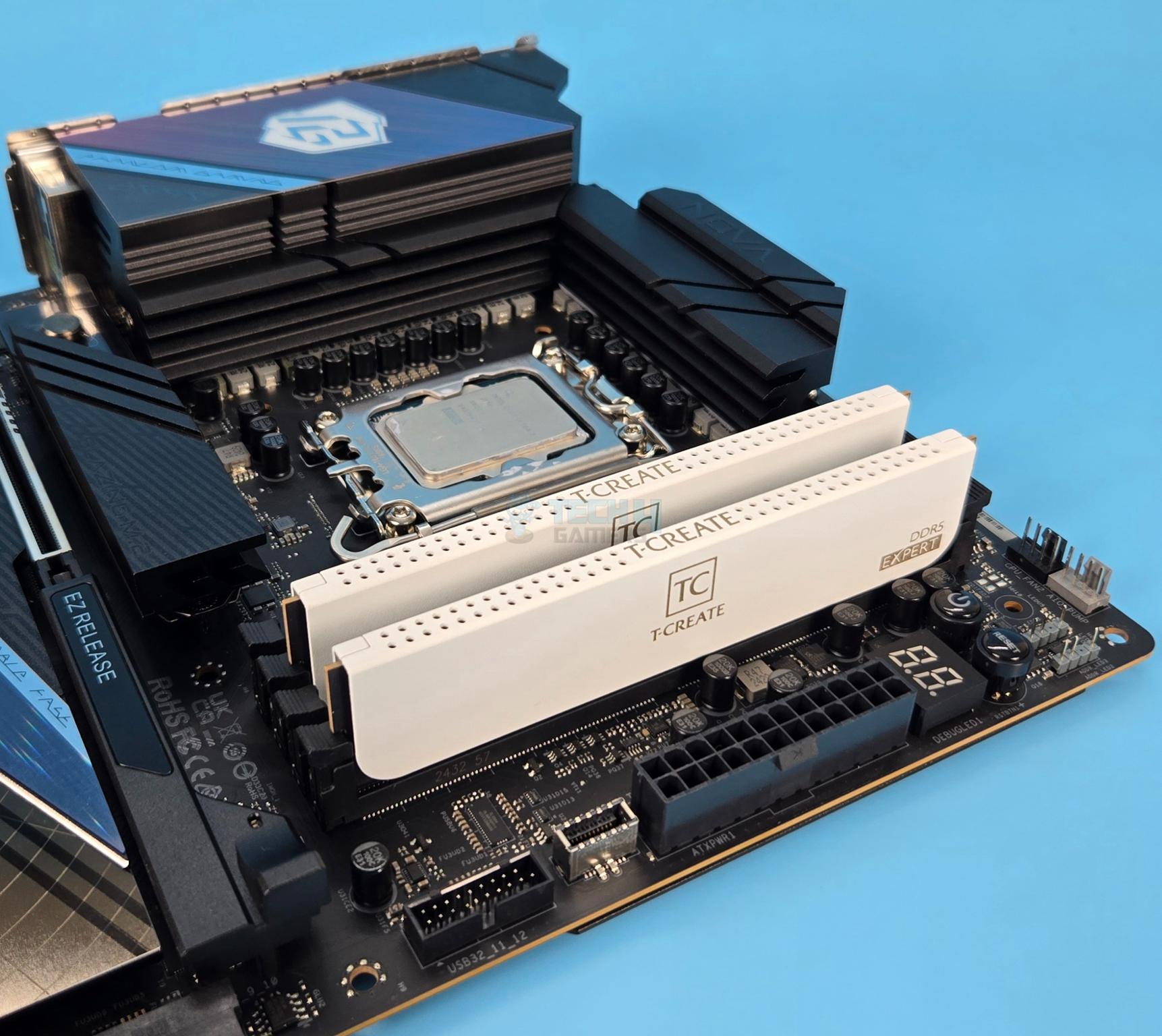Ideal For Streamers On The Go!
Review Summary
The AVerMedia Elite Go (GC313Pro) is a compact capture card–charger combo made for streamers and creators who are looking for portability. It captures at 1080p60 while offering 4K60 passthrough, making it suitable for Twitch and YouTube streaming setups where Full HD is enough. Lastly, its 100W GaN charging feature makes it a unique travel-friendly device. However, the lack of 4K capture and reliance on basic software may leave professional users wanting more.
Hours Tested: 3 Days
Overall
-
Design - 9/10
9/10
-
Performance - 8.5/10
8.5/10
-
Portability - 9.5/10
9.5/10
-
Software - 8/10
8/10
-
Value - 8.5/10
8.5/10
Pros
- Compact Design
- 100W GaN Charger
- 1080p60 Capture
- 4K60 Passthrough
- Plug-and-play
Cons
- 1080p Limit
- Average Software
- No 4K Recording
- Not For High-end Setups
Throughout my testing journey, I’ve had the opportunity to review quite a few capture cards from AVerMedia. Most recently, the Live Gamer Ultra S (GC553Pro). Each of them has its strengths and weaknesses, which make it stand out in different ways. So when AVerMedia sent me their new Elite Go (GC313Pro), I couldn’t help but wonder how it would hold up against its predecessors.
I wasn’t expecting a big shake-up in how capture cards work. After all, how much can you change in a category that’s already nailed down 4K capture and low-latency streaming? Well, turns out AVerMedia had a surprise up its sleeve. On paper, it’s pitched as a compact yet capable capture card built for creators who are always on the go and don’t want to be tied to their gaming desk.
Notably, it’s a portable capture card, but not in a way that compromises power. This thing’s small enough to fit in your bag, yet it still delivers high-resolution, smooth video capture. Most importantly, its USP lies in the practicality of a charging brick. From the specs alone, it’s ticking a lot of boxes. However, that’s all on paper. The real question is, how does it perform? Well, that’s what I’m about to find out.
Key Takeaways
- The AVerMedia Elite Go (GC313Pro) is a compact capture card with 1080p60 recording and 4K60 passthrough. Moreover, it doubles as a 100W GaN charger, making it a handy travel-friendly choice for streamers and creators on the go.
- You should consider the AVerMedia Elite Go if you want portability and convenience, are fine with 1080p capture, and need 4K60 passthrough for gaming.
- You should skip the AVerMedia Elite Go if you are looking for high capture resolutions, don’t care about the charger combo, and mostly stream from a single setup.
Here are the technical specifications:
| Power |
|
| Output |
|
| Fast Charging Protocol | PD 3.0 |
| Overload Protection |
|
| Interfaces |
|
| Video Input (from video source) | USB-C DP Alt Mode |
| Max. Pass-Through Resolution | 4K60 |
| Max. Capture Resolution | 1080p60 |
| Video Format | YUY2, MJPEG |
| Audio Output | Stereo |
| Dimensions (W x D x H) | 66 x 36.6 x 62 mm (2.60 x 1.44 x 2.44 in) |
| Weight | 250 g +/-10 g ( 8.82 oz.) |
What Makes The AVerMedia Elite Go Different?
The AVerMedia’s previous capture cards were all about delivering 4K capture quality with features like HDR and VRR. However, the Elite Go (GC313Pro) goes in a different direction. Instead of having high-end specs, it doubles as a 100W GaN charger while still handling 1080p60 capture with 4K60 passthrough, and the whole thing comes in a small cube you can easily put in your bag.
This type of combo makes it stand out if you’re the type of creator who’s often travelling. Elgato and other brands might give you higher capture resolutions or HDR support, but they don’t offer the same built-in charging or travel-friendly design.
Packaging & Unboxing Experience
The box is pretty compact and organized, nothing fancy, just clean and straightforward. At the front, you’ll find the Elite Go image. The text around it heavily emphasizes its all-in-one capabilities, including connecting to a big screen, transferring data, and capturing video. Above the image, in a cool brush-style font, the Elite Go branding reminds you it’s part of the company’s premium Go series.
Just beneath the main visual, the relevant features are highlighted so that you can see their key functions. Turning the box to one side, you’ll find the complete technical specifications, everything from supported resolutions and capture formats to the port details and power delivery output. Lastly, at the bottom, you’ll find a clear breakdown of what’s inside the box, including the Elite Go itself and its accessories.
Box Contents
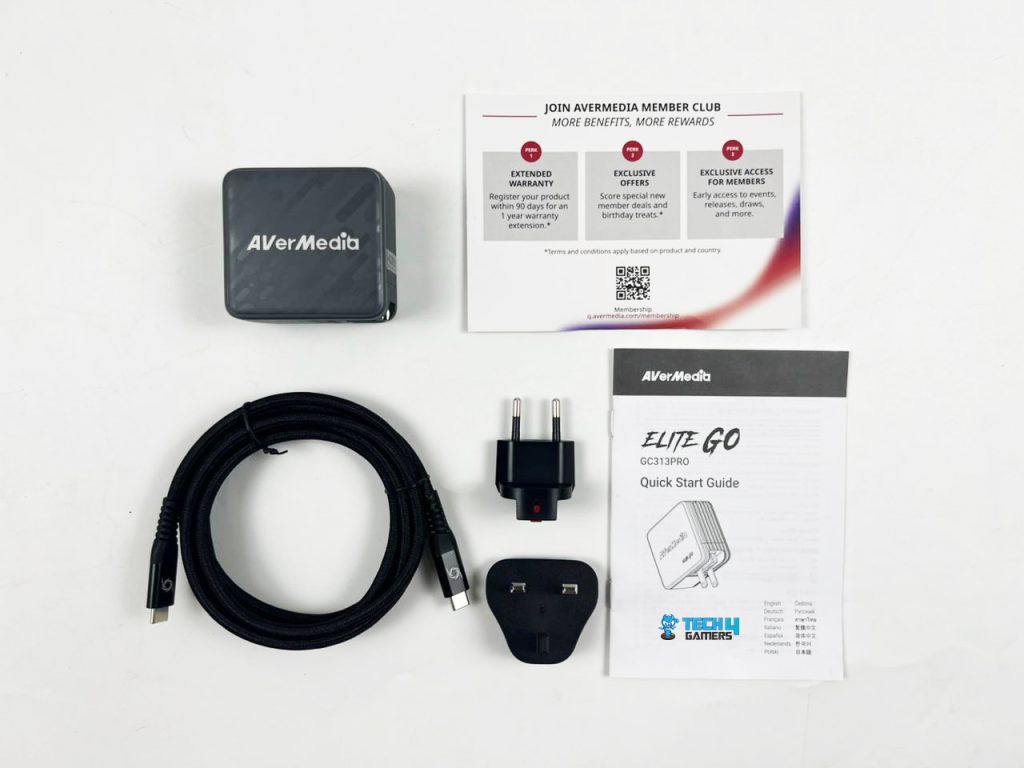
Upon opening the box, you’ll first be greeted with the Elite Go wrapped in a plastic sleeve at the top. Beneath it, you’ll find all the necessary accessories. Inside, everything is neatly arranged in different and protective compartments to avoid any damage during shipping. All of this is laid out in a way that makes setup quick and hassle-free.
Here is the list of everything that you’ll find inside the box:
- Elite Go (GC313Pro)
- USB Type-C to Type-C Braided Cable (2 m/ 6.56 ft.)
- Changeable AC Plug (EU & UK)
- Quick Start Guide
Design & Build Quality
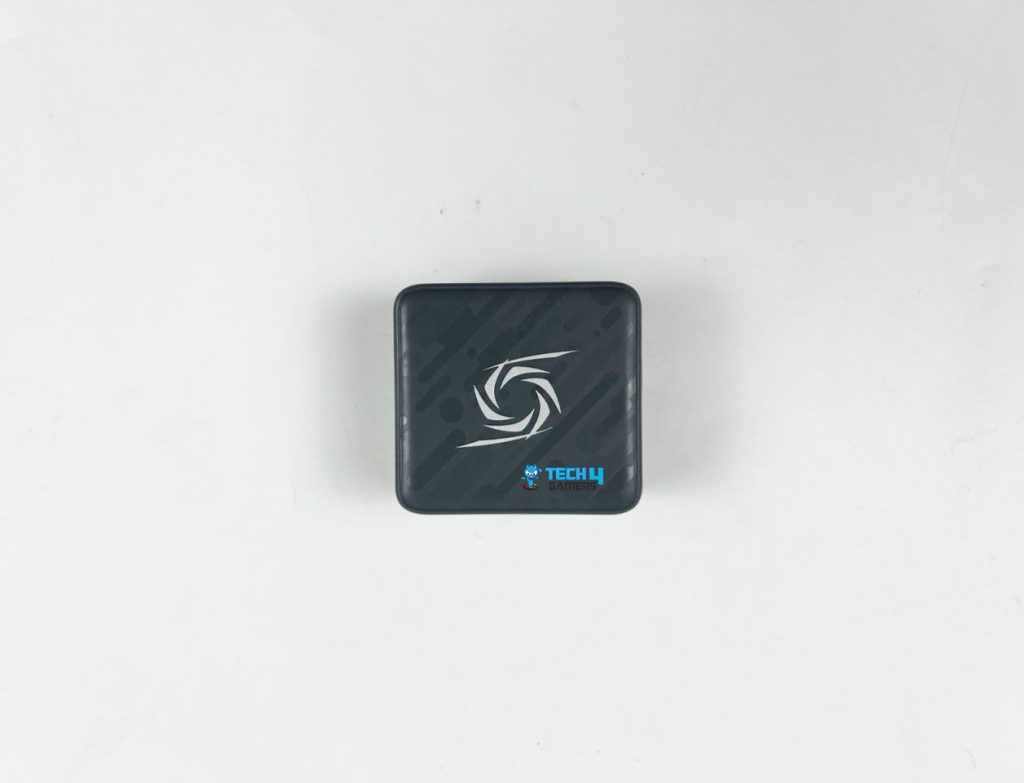
Getting the Elite Go out of the box, my first thought was that this thing’s a travel brick. It’s small, measuring about 66 × 36.6 × 62 mm, but it’s got some heft to it. At around 250 g, you can feel a bit of weight when you pick it up, just enough to notice, but it’s nowhere near heavy enough to make your bag a chore to carry. This tiny bit of weight turns out to be a good thing.
When connected to a power socket, it simply sits in the wall, doesn’t move while you’re connecting cables, and stays firmly in place when connected to a device. It made me realize that it is built with travel in mind, not just to tick the portable box. The casing is quite solid with a mix of sturdy, high-quality plastics with a matte finish that does a decent job of keeping fingerprints out of the equation.
There is no glossy nonsense here, and the branding on top is subtle. My review unit came in black, which is a safe choice if you want it to blend in with a typical desk setup, though there’s a white version too. The whole design leans more towards a minimal aspect with clean edges, a cube-ish shape, and none of those over-the-top gamer-y angles. All in all, it’s just a smart little charger that doubles as a capture device.
Ports & Connectivity
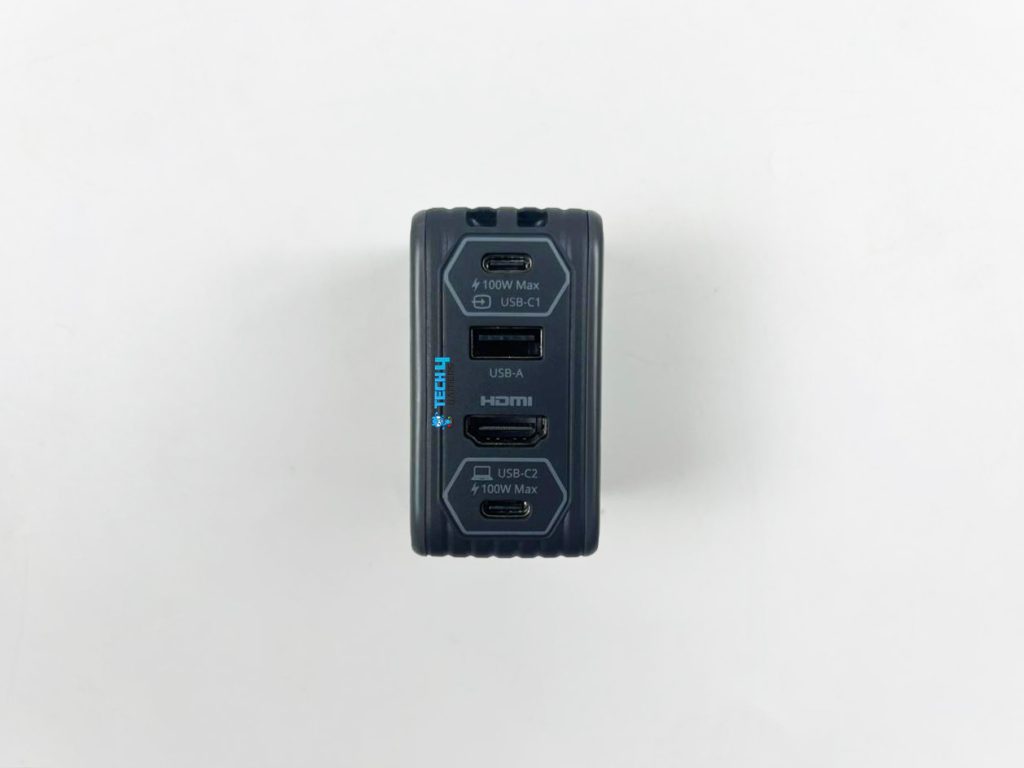
One of the things I like about the Elite Go is that it doesn’t overwhelm us with a mess of cables, yet it still provides all the essentials for streaming or recording. The ports and layout are sensible and clearly labelled. The top edge has two USB-C ports and a USB-A port, plus an HDMI port for pass-through. AVerMedia clearly labels the USB-C ports as C1 and C2.
The C1 is the source/device input (and supports DisplayPort Alt Mode for monitors), while C2 is the data output to your PC (capture). The USB-A port is handy for peripherals or mics when the source is on C1. This layout keeps cables from fighting for space and makes it obvious which cable goes where. There is no need for guesswork when you’re setting up.
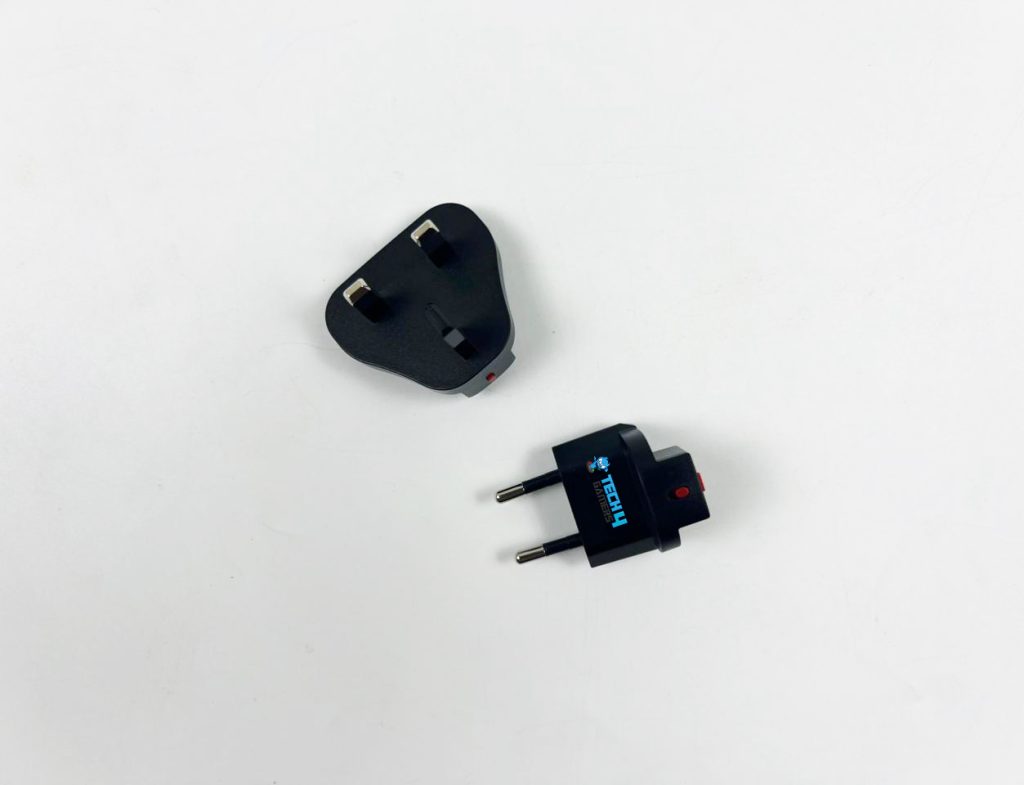
It also comes with swap-out AC plugs that include both EU and UK options in the box. So if you’re travelling between Europe and the UK (or anywhere else that uses those), you can skip the bulky adapters and the search for the right outlet. Moreover, it works with pretty much any power supply between 100 and 240 volts, which covers most of the requirements without you having to think twice.
Charging
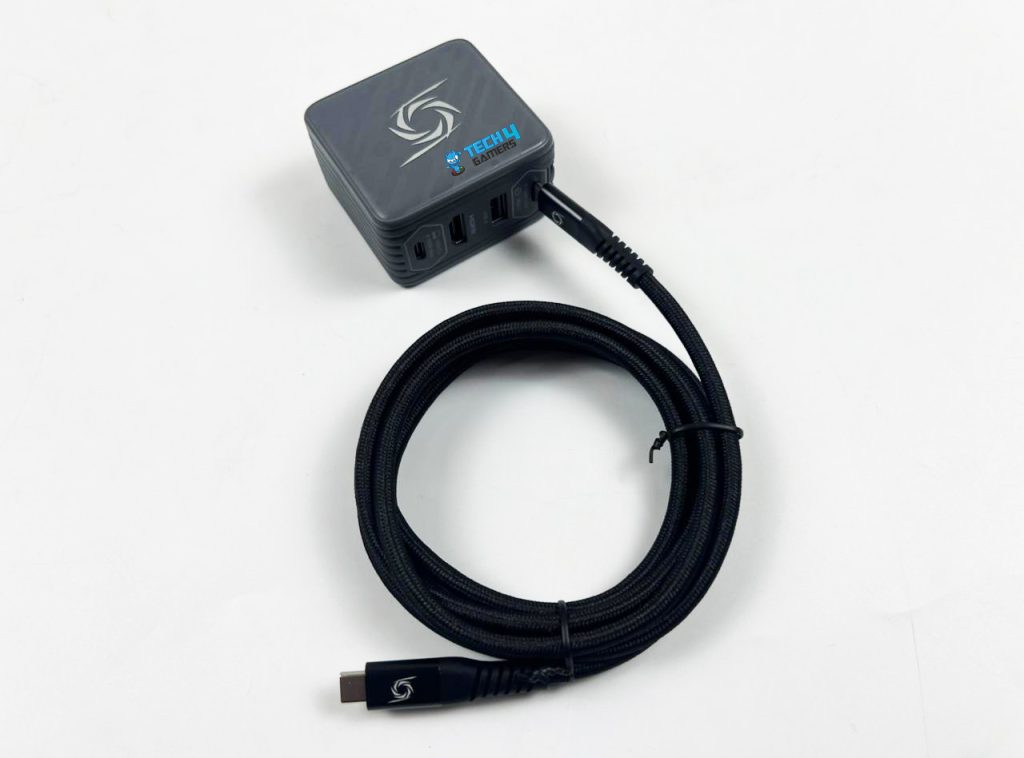
When it comes to charging, it uses GaN tech under the hood, which provides a 100W quick charge in such a compact design without overheating. It does sound like marketing fluff, but it just means it’s more efficient and runs cooler than the typical charging bricks. Of course, if you were to run it flat-out all day, then surely it would get a bit hot.
Therefore, I would recommend giving it some space to breathe if you’re pushing it. Most of the time, it’s just there, doing its thing. Sometimes I touched it out of curiosity, and it’s barely even warm, if at all.
In my experience testing it out, the Elite Go charged my laptop and mobile phone without any issues. My laptop charged fully in a reasonable time, and my phone hit 100% faster than usual. Even with both plugged in, the charger stayed surprisingly cool, which is nice when you’re charging up a couple of devices at once.
Power Delivery
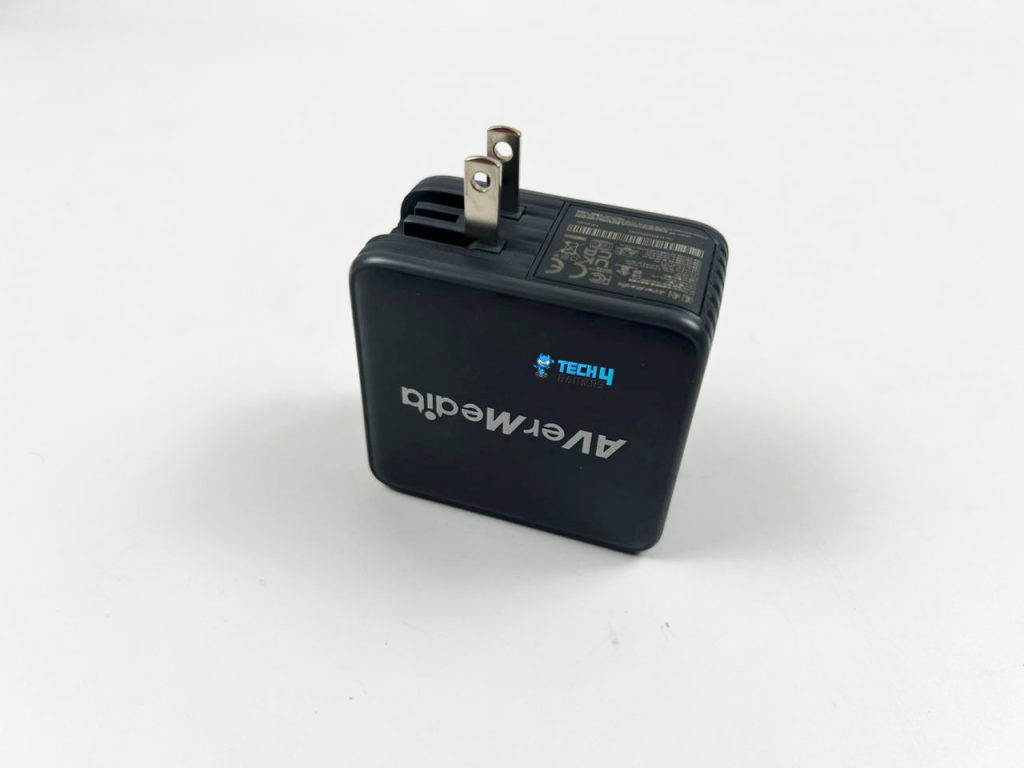
This is possible thanks to its Power Delivery 3.0, so you’re getting the newest fast-charging standard. In plain English, that means your devices charge up quicker without damaging the battery in return. There’s basic but sensible overload and short-circuit protection built in as well, so it behaves like a proper power accessory rather than a cheap wall-wart.
I like that it’s smart enough to adjust the power depending on what you plug in. It automatically divvies up the power depending on how many devices you plug into it for charging. For instance, if you’re plugging just one device into the USB-C port, you’ll get the full 100 watts.
If you connect both USB-C ports, then the power would split into about 45 watts each. In comparison, the USB-A stays at 5 watts no matter how many devices are plugged into it, which is plenty for a mouse, keyboard, or similar device. The handy thing is, you can connect up to three devices at the same time.
Performance
The Elite Go handles video surprisingly well. You can go up to 4K at 60Hz to a monitor or TV, and it stays smooth with no weird hiccups or lag while gaming, working on a laptop, or just watching stuff. For recording or streaming, it delivers 1080p at 60FPS with ease. For most setups, that’s more than acceptable. The video comes out smooth, and honestly, your computer might barely break a sweat while it’s running.
Honestly, 1080p at 60FPS works perfectly for pretty much any setup these days. It looks excellent and doesn’t require crazy bandwidth or heavy-duty hardware to process. That’s more than enough for most streaming platforms these days, since many still cap at 1080p output. So, trying to capture in higher resolutions would mostly eat up extra system resources without giving you anything additional. Another cool thing about the Elite Go is its flexibility in video input.
It doesn’t just rely on HDM, since it can also take USB-C video input from devices like phones, tablets, or handheld gaming consoles. That said, not every handheld will work. For instance, the Nintendo Switch Lite has no USB-C video output, so even with this capture card, you can’t display its screen to a monitor or TV. On the other hand, devices like the Steam Deck or ASUS ROG Ally will work fine, since they support USB-C video output.
Software
AVerMedia accompanies the Elite Go with a companion app called Assist Central Pro, and it’s pretty useful. You can download it directly from the product page, run the installer, and you’re up and running in minutes. The interface keeps things simple, so I didn’t feel lost at all. In the top-left corner, you’ll find your device details and the HDCP toggle, a content-protection feature that prevents recording protected movies or shows over HDMI.
Selecting the right video and audio source would be easy for most users, and I would suggest using the recommended settings. What I appreciated was how easy it was to check the firmware updates, tweak some basic options, or run troubleshooting tools. There’s also a feedback system built in. If an issue arises, you can enable the bug report recorder, recreate the problem, and submit it to AVerMedia through a quick form.
It’s a nice little shortcut when things go sideways and you don’t feel like typing out a long explanation. That said, the software is pretty bare-bones. It covers the essentials but doesn’t go beyond them. Features like built-in color grading or basic capture editing would’ve been nice additions. On the plus side, the Elite Go works well with third-party software, so you’re free to use OBS, Streamlabs, or whatever you’re most comfortable with
Should You Buy It or Not?
Buy it if
✅ You Want Portability and Convenience: The Elite Go isn’t just a capture card; it’s also a 100W GaN charger packed into a cube-sized design. This is perfect if you’re constantly moving and don’t want to carry extra devices.
✅ You’re Fine With 1080p Capture: If your content is mainly for Twitch, YouTube, or streaming on platforms where 1080p60 is more than enough, this would fulfill most of your requirements.
✅ You Need 4K60 Passthrough for Gaming: Even though the capture quality is capped at 1080p, passthrough supports 4K60, so you still get smooth gameplay visuals on your main screen.
Don’t Buy It If
❌ You’re Looking for a Higher Capture Resolution: If your content relies on 4K capture or HDR recording, you’ll find this limiting compared to standalone options from AVerMedia or similar brands.
❌ You Don’t Care About the Charger Combo: If you’re mainly after the best raw capture performance, the built-in GaN charger may feel like an unnecessary feature you’re paying for.
❌ You Mostly Stream From a Single Setup: If portability isn’t a concern and your devices stay in one place, a more traditional capture card could meet your needs better.
Final Verdict
The AVerMedia Elite Go is a unique capture card, combining a power brick with the functionality of a capture device to make sense in real-world use. There was a market gap and a need for users that AVerMedia smartly captures and fulfills. They have combined a travel charger with a 1080p60 capture card and 4K60 passthrough. AVerMedia has carved out a niche that caters to creators and gamers who are constantly on the move.
What I liked most about this in my testing wasn’t just the video performance or the fast charging, but the fact that it all worked together without any problem whatsoever. Whether I was capturing gameplay, charging my laptop, or connecting to an external monitor, the Elite Go performed remarkably. Sure, it’s not meant to compete with a full-on desktop capture card, and that’s fine. At $129.99, it feels fair for what it delivers, especially since it doubles as a charger.
What the Elite Go nails is being practical, portable, and dead simple to use. If you’re the kind of streamer or gamer who’s constantly moving around but still wants a reliable capture setup, this is a solid little device to throw in your bag. On the other hand, if you don’t travel much and want something for recording or streaming from your home setup, you might want to check out my review of the AVerMedia Live Gamer Ultra 2.1 instead.
Thank you! Please share your positive feedback. 🔋
How could we improve this post? Please Help us. 😔
[Hardware Reviewer]
After many years of exploiting various pieces of hardware, Abdul Hannan now serves as an editor at Tech4Gamers. He’s been in the PC hardware reviewing industry for almost a decade, and his staff of passionate geeks and reviewers is second to none.
Abdul Hannan is constantly seeking new methods, you will always see him running into New Computer Courses to improve the performance of his computer components since he is an ardent overclocker. He is well-known for providing the most extensive and unbiased analysis of the newest and greatest hardware for PC gaming, including everything from GPUs to PSUs.


 Threads
Threads



